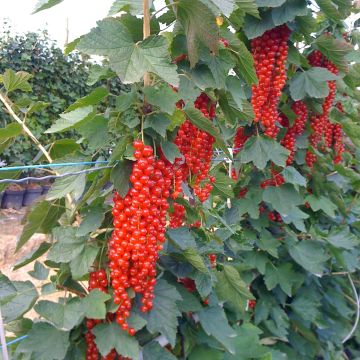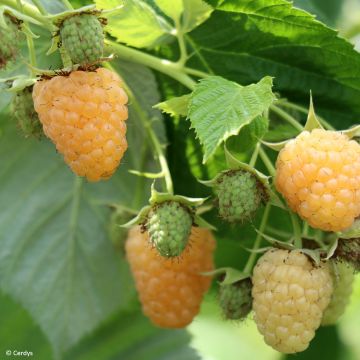Shipping country and language
Your country of residence may be:
Your country of residence is:
For a better user experience on our website, you can select:
Your shipping country:
Andorra
Austria
Belgium
Bulgaria
Canada
Chile
Croatia
Cyprus
Czechia
Denmark
Estonia
Finland
France
Germany
Greece
Hungary
Iceland
Ireland
Italy
Latvia
Lithuania
Luxembourg
Malta
Monaco
Netherlands
Poland
Portugal
Romania
Slovakia
Slovenia
Spain
Sweden
Switzerland
United Kingdom
We only deliver seed and bulb products to your country. If you add other products to your basket, they cannot be shipped.
Language:
French
German
Spanish
English
My Account
Hello
My wish lists
Plantfit
Log in / Register
Existing customer?
New customer?
Create an account to track your orders, access our customer service and, if you wish, make the most of our upcoming offers.


Chimonanthus praecox Grandiflorus


Chimonanthus praecox Grandiflorus
Chimonanthus praecox Grandiflorus
Chimonanthus praecox Grandiflorus
Wintersweet
Very high-quality young plant: well-rooted, well-branched, and of a homogeneous shape. Pruning is in line with the description (1m (3ft)); flower buds are ready for spring!
DoDo, 02/11/2023
Order in the next for dispatch today!
Dispatch by letter from 3,90 €.
Delivery charge from 5,90 € Oversize package delivery charge from 6,90 €.
More information
This item is not available in your country.
Shipping country:
Andorra
Austria
Belgium
Bulgaria
Canada
Chile
Croatia
Cyprus
Czechia
Denmark
Estonia
Finland
France
Germany
Greece
Hungary
Iceland
Ireland
Italy
Latvia
Lithuania
Luxembourg
Malta
Monaco
Netherlands
Poland
Portugal
Romania
Slovakia
Slovenia
Spain
Sweden
Switzerland
United Kingdom
Schedule delivery date,
and select date in basket
This plant carries a 24 months recovery warranty
More information
We guarantee the quality of our plants for a full growing cycle, and will replace at our expense any plant that fails to recover under normal climatic and planting conditions.
Oversize package: home delivery by special carrier from 6,90 € per order..
Express home delivery from 8,90 €.
From 5,90 € for pickup delivery and 6,90 € for home delivery
Express home delivery from 8,90 €.

Would this plant suit my garden?
Set up your Plantfit profile →
Description
The Chimonanthus praecox Grandiflorus, also known as "Wintersweet", is a beautiful variety of the fragrant Chimonanthus bush, which is highly appreciated for its scented winter flowers. The 'Grandiflorus' variety has larger, more colourful flowers resembling tiny buttercups that trail. These flowers are bright yellow with dark red reverses and longer leaves. The plant grows slowly, is a bit frost-sensitive, and prefers sunny locations. It requires fresh, humus-rich, and light soil to thrive. You can grow it against a south-facing wall, nestle it in the heart of a flowering hedge, or place it in a large container on the terrace.
The Chimonanthus praecox is a deciduous shrub belonging to the Calycanthaceae family and is native to medium mountain areas of China and Korea. It typically grows at altitudes between 500 and 1100 meters (3608 to 11 feet). It prefers mild and humid oceanic climates, which allows it to bloom from November to March on bare branches. The 'Grandiflorus' form, awarded by the RHS, is a hybrid of this botanical species and was introduced to Europe before 1920. The plant forms a thicket of stiff and angular stems that can grow up to 2.5 metres (8 feet and 2 inches) high and 1 to 2 metres feet and 7 inches) wide. Its flowering takes place between November and March, depending on the mildness of the climate. The trailing flowers are bright yellow with red centres and reverse and have a light fragrance similar to the florist's hyacinth. They measure 3 to 4 cm (1.6 inches) wide. After the flowers, brown urn-shaped fruits containing mobile seeds are formed. The foliage consists of large, shiny, lance-shaped leaves 15 cm (5.9 inches) long.
The Chimonanthus plant with its large flowers should be planted alone at the back of a bed, accompanied by Daphnes, Sarcococcas or Camellias. It grows slowly and can be grown in a large container near the house to enjoy its unique charm in the off-season. The flowering branches can make beautiful winter bouquets, witch hazels, forsythias or Japanese cherry trees, whose branches can be forced in a vase.
Chimonanthus praecox Grandiflorus in pictures




Plant habit
Flowering
Foliage
Botanical data
Chimonanthus
praecox
Grandiflorus
Calycanthaceae
Wintersweet
China
Other Chimonanthus
Planting and care
For a beautiful flowering of Chimonanthus, you should plant it in a sunny location protected from winds, such as a wall exposed to the south or west. It can grow in all soil types but prefers well-drained sandy soils with silica or neutral soils with small amounts of limestone. It is hardy up to -15°C, but it is recommended to plant it in a sheltered location for better results. Chimonanthus can be grown in a pot or open ground and trained against bushes in borders or as a free-standing hedge. To fully enjoy its exceptional fragrance, plant it near your house. Due to its slow growth, it only flowers several seasons after planting, so patience is required.
Planting period
Intended location
Care
- , onOrder confirmed
Reply from on Promesse de fleurs
Hedge shrubs
Haven't found what you were looking for?
Hardiness is the lowest winter temperature a plant can endure without suffering serious damage or even dying. However, hardiness is affected by location (a sheltered area, such as a patio), protection (winter cover) and soil type (hardiness is improved by well-drained soil).

Photo Sharing Terms & Conditions
In order to encourage gardeners to interact and share their experiences, Promesse de fleurs offers various media enabling content to be uploaded onto its Site - in particular via the ‘Photo sharing’ module.
The User agrees to refrain from:
- Posting any content that is illegal, prejudicial, insulting, racist, inciteful to hatred, revisionist, contrary to public decency, that infringes on privacy or on the privacy rights of third parties, in particular the publicity rights of persons and goods, intellectual property rights, or the right to privacy.
- Submitting content on behalf of a third party;
- Impersonate the identity of a third party and/or publish any personal information about a third party;
In general, the User undertakes to refrain from any unethical behaviour.
All Content (in particular text, comments, files, images, photos, videos, creative works, etc.), which may be subject to property or intellectual property rights, image or other private rights, shall remain the property of the User, subject to the limited rights granted by the terms of the licence granted by Promesse de fleurs as stated below. Users are at liberty to publish or not to publish such Content on the Site, notably via the ‘Photo Sharing’ facility, and accept that this Content shall be made public and freely accessible, notably on the Internet.
Users further acknowledge, undertake to have ,and guarantee that they hold all necessary rights and permissions to publish such material on the Site, in particular with regard to the legislation in force pertaining to any privacy, property, intellectual property, image, or contractual rights, or rights of any other nature. By publishing such Content on the Site, Users acknowledge accepting full liability as publishers of the Content within the meaning of the law, and grant Promesse de fleurs, free of charge, an inclusive, worldwide licence for the said Content for the entire duration of its publication, including all reproduction, representation, up/downloading, displaying, performing, transmission, and storage rights.
Users also grant permission for their name to be linked to the Content and accept that this link may not always be made available.
By engaging in posting material, Users consent to their Content becoming automatically accessible on the Internet, in particular on other sites and/or blogs and/or web pages of the Promesse de fleurs site, including in particular social pages and the Promesse de fleurs catalogue.
Users may secure the removal of entrusted content free of charge by issuing a simple request via our contact form.
The flowering period indicated on our website applies to countries and regions located in USDA zone 8 (France, the United Kingdom, Ireland, the Netherlands, etc.)
It will vary according to where you live:
- In zones 9 to 10 (Italy, Spain, Greece, etc.), flowering will occur about 2 to 4 weeks earlier.
- In zones 6 to 7 (Germany, Poland, Slovenia, and lower mountainous regions), flowering will be delayed by 2 to 3 weeks.
- In zone 5 (Central Europe, Scandinavia), blooming will be delayed by 3 to 5 weeks.
In temperate climates, pruning of spring-flowering shrubs (forsythia, spireas, etc.) should be done just after flowering.
Pruning of summer-flowering shrubs (Indian Lilac, Perovskia, etc.) can be done in winter or spring.
In cold regions as well as with frost-sensitive plants, avoid pruning too early when severe frosts may still occur.
The planting period indicated on our website applies to countries and regions located in USDA zone 8 (France, United Kingdom, Ireland, Netherlands).
It will vary according to where you live:
- In Mediterranean zones (Marseille, Madrid, Milan, etc.), autumn and winter are the best planting periods.
- In continental zones (Strasbourg, Munich, Vienna, etc.), delay planting by 2 to 3 weeks in spring and bring it forward by 2 to 4 weeks in autumn.
- In mountainous regions (the Alps, Pyrenees, Carpathians, etc.), it is best to plant in late spring (May-June) or late summer (August-September).
The harvesting period indicated on our website applies to countries and regions in USDA zone 8 (France, England, Ireland, the Netherlands).
In colder areas (Scandinavia, Poland, Austria...) fruit and vegetable harvests are likely to be delayed by 3-4 weeks.
In warmer areas (Italy, Spain, Greece, etc.), harvesting will probably take place earlier, depending on weather conditions.
The sowing periods indicated on our website apply to countries and regions within USDA Zone 8 (France, UK, Ireland, Netherlands).
In colder areas (Scandinavia, Poland, Austria...), delay any outdoor sowing by 3-4 weeks, or sow under glass.
In warmer climes (Italy, Spain, Greece, etc.), bring outdoor sowing forward by a few weeks.



















